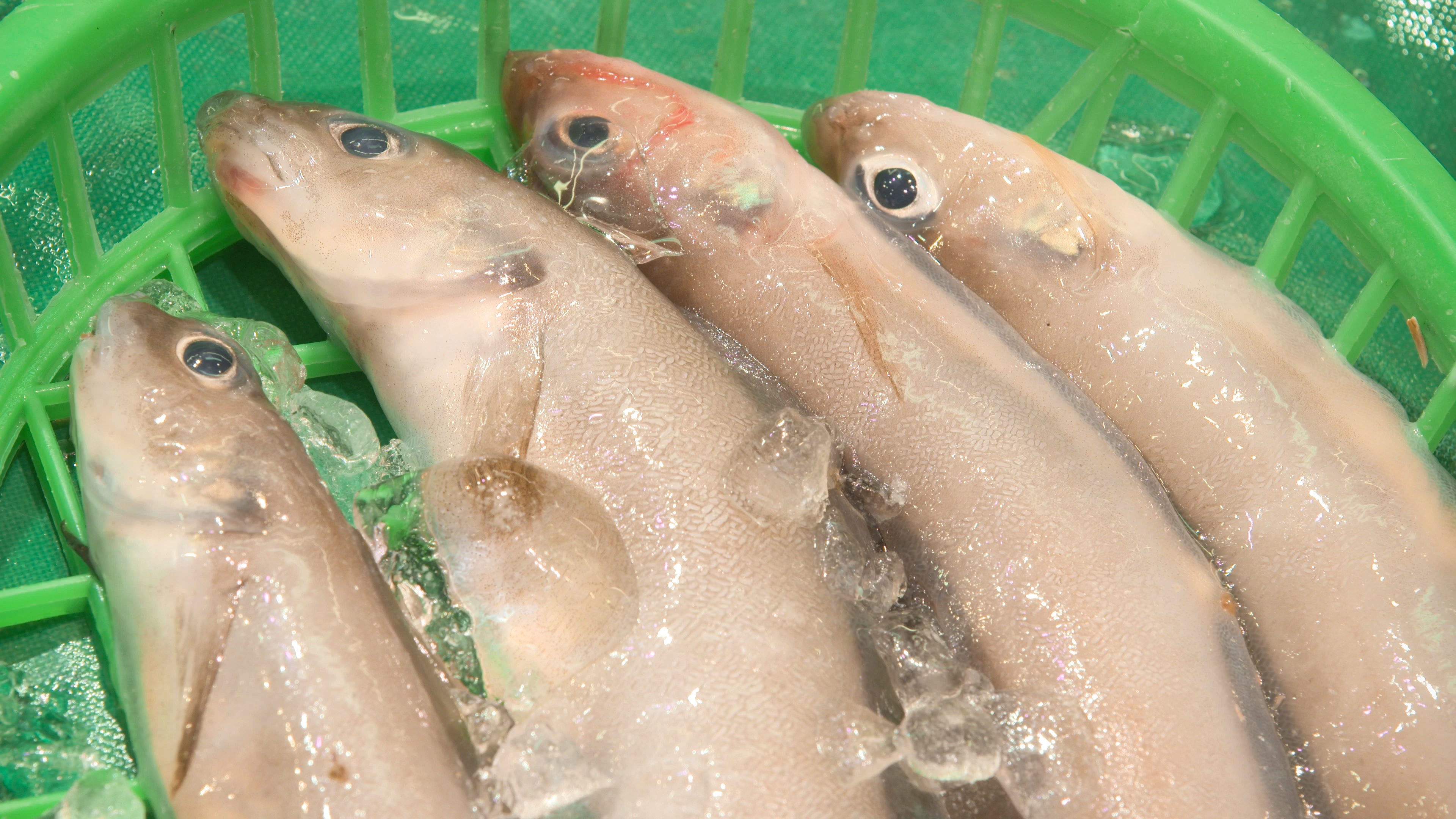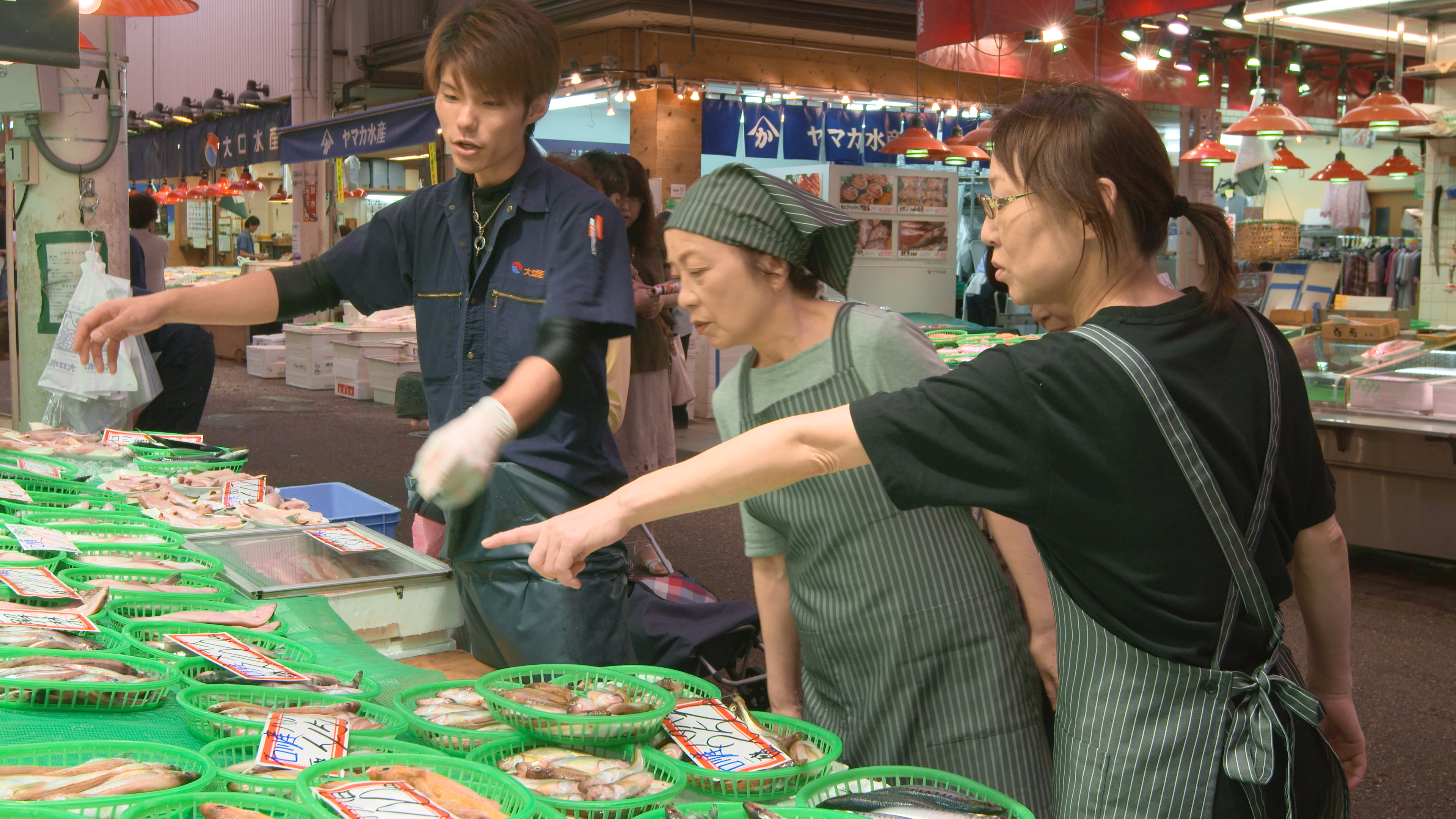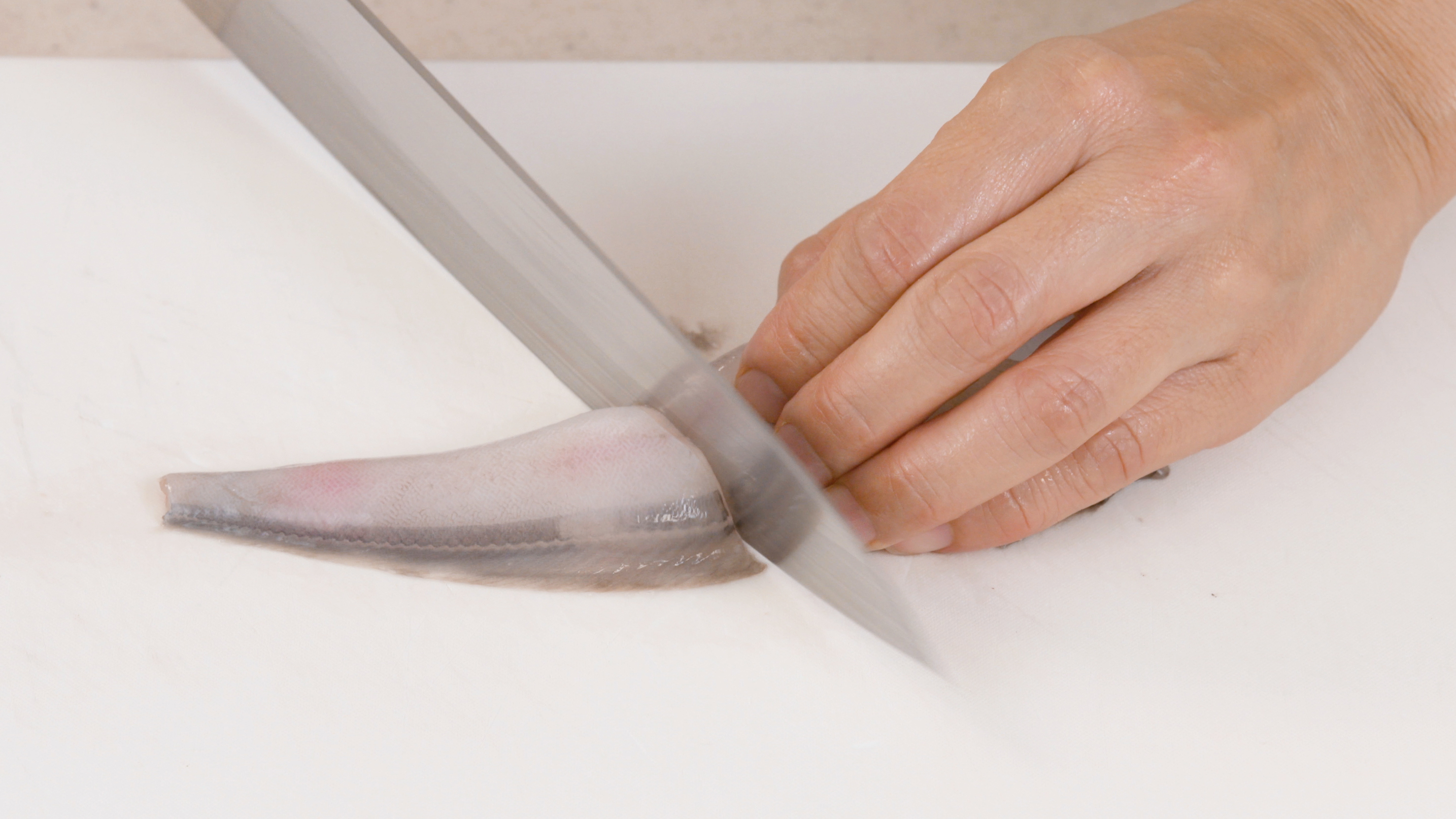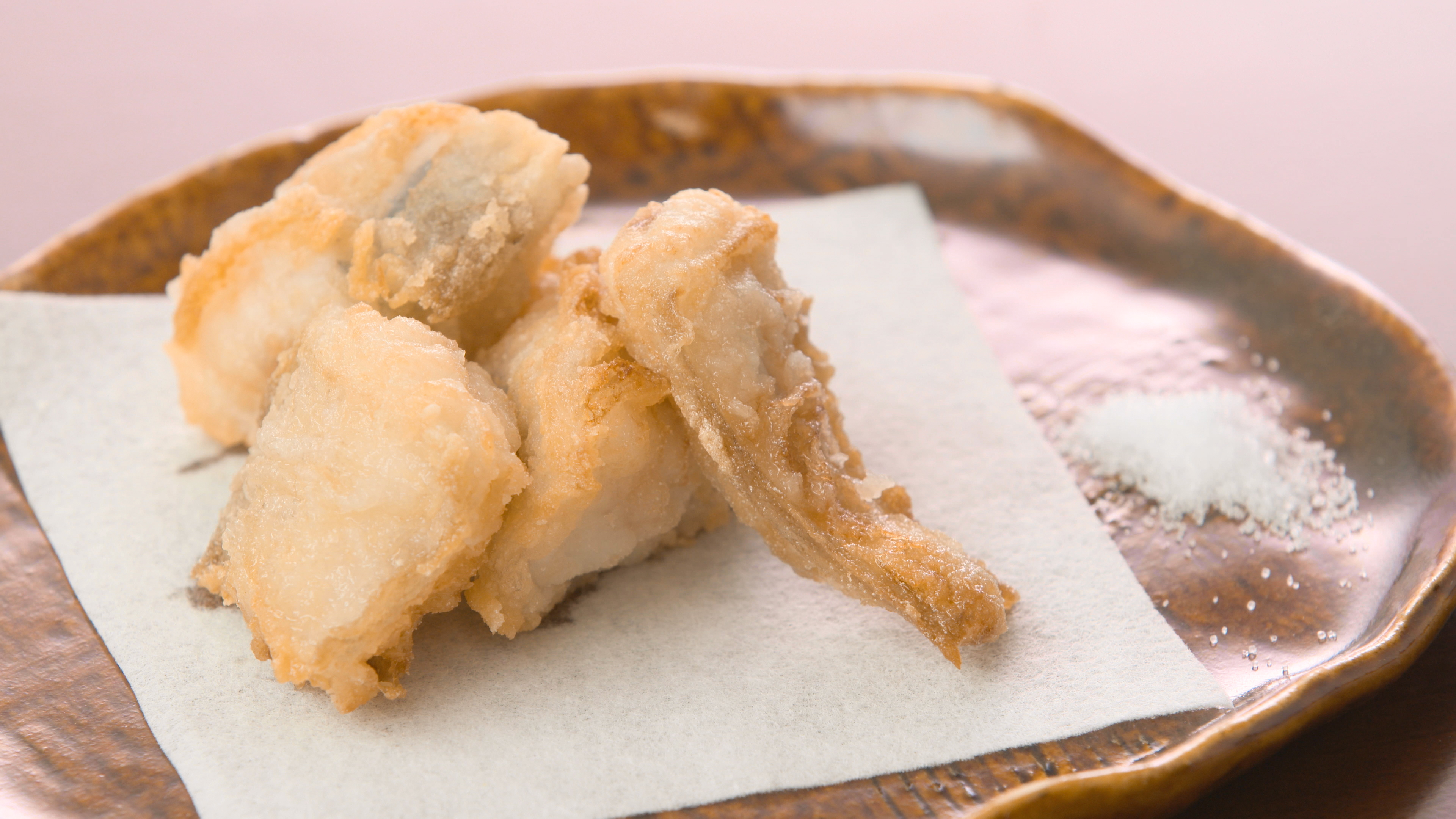
“Genge”: A Gourmet Favorite from the Kanazawa Fishing Scene
JapanIn video
Guide to Japan Culture- English
- 日本語
- 简体字
- 繁體字
- Français
- Español
- العربية
- Русский
From Bycatch to Mystery Fish
The seas off of Kanazawa, Ishikawa Prefecture, are home to a curious fish that is among local residents’ favorites, along with flatfish and northern shrimp. This fish, slender, soft, pliable, and slippery, is a deep-sea ocean pout known locally as genge, or sometimes kunyara, a name that in Japanese calls to mind its eel-like appearance and feel. With thin and easily spoiled meat, it was formerly regarded as bycatch in the trawl-net fishing common to regional seas and routinely thrown back. It is said that fishermen came to refer to it as gegyo, or “lesser fish,” which was corrupted into genge.
 Genge is slender, soft, and slippery to the touch.
Genge is slender, soft, and slippery to the touch.
Preservative technologies have made strides in recent years, however, allowing these fish to enter regular distribution channels. The high levels of collagen in the gelatinous skin of the genge have attracted interest among health-conscious diners, and it is gradually gaining fame and favor across Japan. This has led to another way to write its name—what used to be 下魚, the “lesser fish,” is increasingly written 幻魚, meaning “phantom fish,” in reference to the growing difficulty of finding it in the shops. However you write its name, though, its price continues to increase year after year.
 Seafood is a regular part of life in Kanazawa.
Seafood is a regular part of life in Kanazawa.
One typical way to cook genge is batter frying. After the head and entrails are removed, the fish is cut into round slices, which are coated in flour and lightly fried. This removes the slippery texture, leaving a delicious, crispy skin and tender meat.
 After removing the head and internal organs, cut the genge into round slices.
After removing the head and internal organs, cut the genge into round slices.
To make a genge miso soup, just put the round slices of the fish into boiling water, mix in the miso stock when the fish is cooked all the way through, and garnish with sliced green onions or other ingredients to taste. As the broth comes from the genge, the soup can be eaten as is, allowing the fish’s essential flavor to be savored without the need for such additional ingredients as dried bonito flakes or konbu kelp strips.
 Batter-fried genge, crispy outside, tender inside.
Batter-fried genge, crispy outside, tender inside.
(Originally written in Japanese. Created in cooperation with Kanazawa Cable Television. Banner photo: Genge are rich in collagen. All photos © Kanazawa Cable Television.)